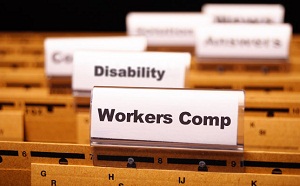 Is Your Company at Risk of AI Washing?
Is Your Company at Risk of AI Washing?Did you know? Forty percent of workplace injuries happen to employees who have been on the job less than one year according to the OSHA Office of Statistics. And compared with experienced workers, new hires are five times more likely to have a lost time injury in the first month of employment than an experienced worker.
Those are sobering statistics, and proof that if you want to reduce your workers’ compensation costs, you need to start from the beginning – with new hires.
Why do new employees get injured so often?
Supervisors often think new employees know more than they really do, and only find out the truth when the employee makes a mistake or suffers an injury. Also, many new employees are afraid to ask questions, so they take a “try it and see” approach – which can lead to injuries.
Fortunately, you can reduce newbie mistakes, workplace injuries, and workers’ compensation costs by taking a proactive approach to onboarding new employees. If you’re not familiar with the term, “onboarding” is purposeful, employee-centered orientation. It has evolved into a key area of talent management with many objectives, ranging from creating social connections to cultivating a safety-based culture.
Below are six onboarding strategies to help you reduce workers’ compensation claims:
- Provide a written plan of objectives and responsibilities. A written plan helps newly hired employees fully understand their job functions and the expectation for workplace safety.
- Teach safety from the start. New employees need to be made aware of how serious safety training is from day one. New hire safety orientation may include topics such as ergonomics, fire safety, sexual harassment, electrical safety, housekeeping, safe lifting, and hazard communications.
- Prepare the employee’s workstation. Before the first day, make sure the workstation is fully stocked; computers and equipment are operational; email addresses and phone extensions are ready; and copies of any company manuals, organizational charts, staff lists, and phone directories are provided.
- Adjust for ergonomics. If possible, provide adjustable chairs and/or desks to optimize office ergonomics. Ideally, one person in your office should be trained to help new employees set up their desks in a way that minimizes occupational trauma.
- Establish a “questions” expectation. Let new employees know that questions are expected and they should write down any points needing clarity throughout the workday. The supervisor or a senior “buddy” employee should check in once a day to answer any questions listed.
- Connect regularly. You can’t “hire and forget.” Connect regularly with new hires and schedule meetings to review protocol, answer questions and gather feedback at regular intervals throughout the first year. Also, during staff meetings, regularly communicate safety expectations to all employees.
These onboarding strategies can help you reduce workers’ compensation claims and they can give your new employees the confidence they need to become productive contributors.
Looking for more ways to drive down workers’ compensation costs? Contact us.
Want more human resource ideas? Check out our webinar calendar for upcoming HR webinars and our recordings of past webinars.



